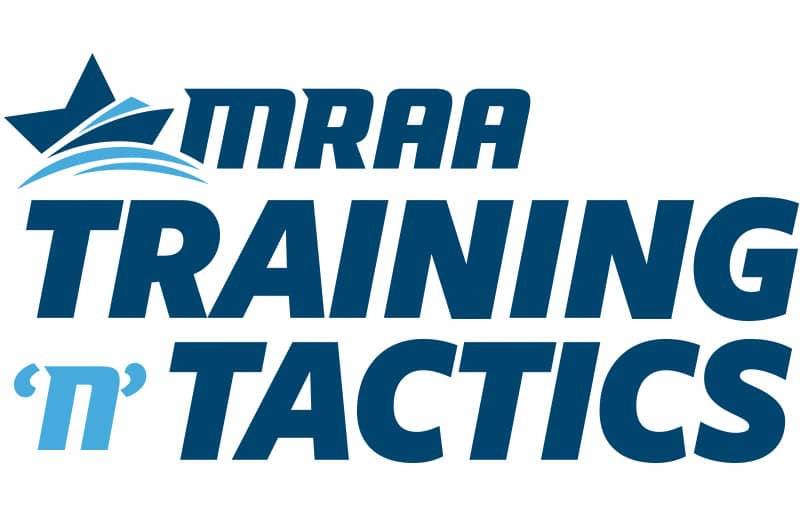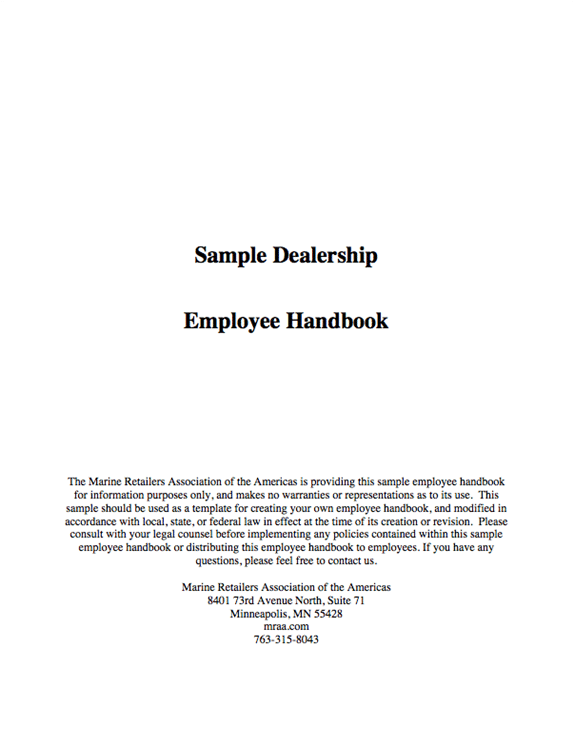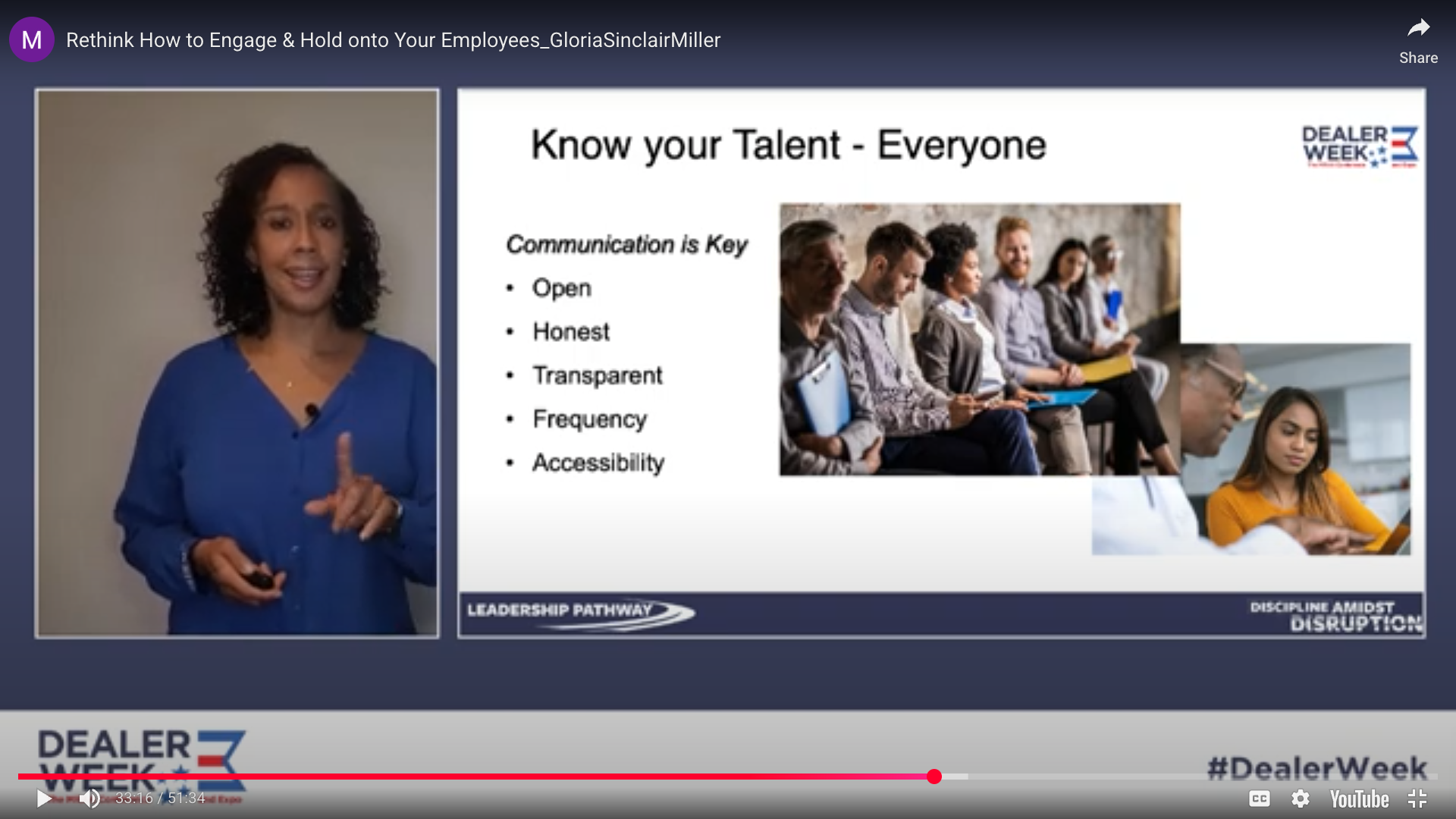Recently you’ve probably heard about the terms “quiet quitting” and “voluntary turnover” while researching hiring and onboarding for your dealership. One reason for these terms and their rise can be attributed to reduced employee engagement and less satisfaction within the workplace. And a lack of training — a problem that often begins as soon as a new hire begins their first day — has been a chief reason employees leave their jobs. What can your business do about it?

Perfecting your onboarding process is a huge deterrent to turnover and it can protect you against both soft and hard costs. In a MRAA webinar: “How to Implement Effective Onboarding,” Kathryn Carlson of HR management firm KPA calls onboarding “the process of meeting the new employee’s immediate needs and the first and best chance to turn a new hire into a productive, engaged and successful employee.” You can access this session as part of MRAA’s Training ‘N’ Tactics educational series.
Employee Handbook
The best onboarding strategies begin in your dealership’s employee handbook. When you first start a job, you want to know what’s expected of you at the new company and other questions like these:
- Who reports to whom?
- What can and can’t I wear?
- How much vacation time do I get?
- What happens to me if I break company policy?

New employees ask a lot of questions like this and many more, so it’s essential for your dealership to be ready with answers. Your preparedness removes the guesswork from the 5 Ws (who, what, when, where and why), and puts everyone on the same page by developing an employee handbook. When people understand their roles and responsibilities, it boosts their confidence, and they are more likely to meet (or exceed) your initial expectations.
Don’t have an employee handbook at your dealership? We understand. That’s why we provide members with a sample employee handbook for information purposes. The sample template helps guide you in creating your own customized employee handbook for your specific business. Of course, it needs to be modified in accordance with your local, state, province or federal law in effect at the time of its creation or revision.
Training, Engagement & Growth
Good training includes effective, ongoing learning and guidance not just overwhelming someone with new information and a lot of introductions to new faces. However, many businesses simply expect employees to acclimate to their brand new job after giving them a quick facility tour and introducing them to all their co-workers within the various departments. Don’t do it this way.
Instead, your onboarding must go beyond a once-over run through. It must include extended training, career development planning and additional engagement opportunities.
Dealership trainer and educator Sam Dantzler ( Garage Composites and Wheelhouse College) says employers know they should be better at helping their employee find success, but call it more challenging due to the “speed of retail.” He’s a firm believer that an effective onboarding process should take multiple weeks, not several hours or only a new hire’s first week.
A common first mistake employers make is not explaining to new employees how their training is going to take place, according to Dantzler. This leads to confusion for everyone. Instead, he believes a good training plan starts with the employer mapping out the process for the employee, explaining what he or she is going to be doing, and when. This plan helps your new hires know what to expect and understand what you expect out of them.
Dantzler suggest a one-month onboarding plan that could work for your dealership. You can get Dantzler’s “weekly roadmap” in the resource: MRAA Guide to Dealership Improvement. Essentially, it involves a four-week onboarding process that gives new employees time to understand the operations and culture of a dealership, generates empathy for the work being done by those around them and sets them up for long-term success. It also makes retaining them easier and acclimates them to the ongoing training they need to grow and your dealership needs to flourish.

Find A Process That Works for YOU
It’s important to know which process works best for your business. Just know that orientation, which usually lasts about a week, is NOT onboarding, although it is part of the onboarding process. It’s wise to do what Dantzler is suggesting, especially if your business currently lacks a proper onboarding process.
O.C. Tanner, an organization that improves workplace culture through personalized employee recognition solutions, says to never stop onboarding and that more companies should view it as never having an end date. That’s because you have the ability to create more connectivity with your employee, build stronger engagement and reward them when they excel and help your business do well. A solid onboarding process will help you improve employee wellness, create expectations, build long-term career development and reduce turnover. It can also help you create a culture of unity and success.
In the MRAA Guide to Building a Foundation for Accountability Jim Million says, “The onboarding process sets the tone for the relationship your new team member will have with the dealership. Think of this process as an initiation to your dealership.” This member resource will lead you through the fundamentals for developing a culture in which employees are held accountable for fulfilling their responsibilities and meeting their goals.
What sort of onboarding process have you installed at your dealership that has produced dedicated, long-term employees? Does your onboarding last 30 days, 60 days or longer? I want to hear from you, so share any proven tactics and success stories you have had with onboarding at your dealership. Send me an email to jerrod@mraa.com with the subject line titled “Onboarding Wins.” I also encourage you to check out the MRAA Spotlight page on Employee Onboarding for more best practices.
PS – Not a member but want to access some of these resources, reach out to MRAA Membership Manager Sherri Cuvala (sherri@mraa.com), or click join MRAA to learn more.




